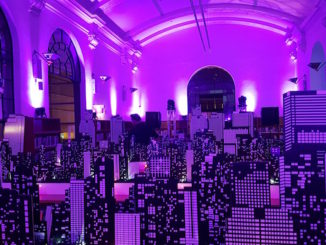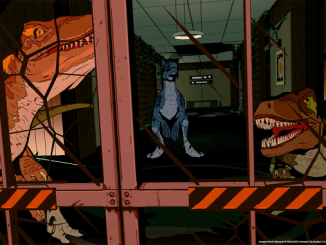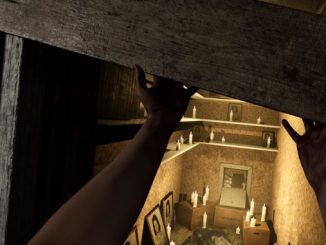Every library has its legends.
And I don’t just mean all those dusty, dog-eared copies of Fellowship of the Ring and Le Morte d’Arthur lining the shelves. Rather, I’m thinking of the stories, the myths, so often associated with these temples to knowledge.
Visit any decent-sized library, and you’ll find someone happy to regale you with tales of ghosts haunting its stacks, long-rumoured hidden chambers, and, in all likelihood, the indiscretions of libidinous undergrads. (It never ceases to amuse me that U of T’s brutalist Robarts Library is reputed as one of Toronto’s prime spots for late-night rendezvous.)
Libraries are the places we go to learn, to meet, to discuss. They’re where we find Margaret Atwood entertaining audiences, where we learn to PhotoShop or to 3D print, where we go to marvel at the extraordinary work of Canadian architectural geniuses.
Robert Lepage’s new immersive theatre/VR production, The Library at Night, is a celebration of all things library. Adapted from a 2007 essay collection by noted Argentine-Canadian writer Alberto Manguel, Library takes us on a virtual reality tour of everything from the earliest repositories of knowledge through fictional libraries and on to the most exciting modern constructions.

The Lighthouse at One Yonge St. is home to some of Toronto’s most instagrammable (if artistically dubious) productions in recent memory, including the distressingly popular Immersive Van Gogh and Immersive Klimt. One way you can immediately tell Library is better? Photos are expressly prohibited.
It makes sense. Most of Library is in VR, so it’s not like you’re going to walk away with screenshots anyway. But director Lepage, one of Canada’s preeminent theatrical figures (responsible for everything from Cirque du Soleil shows to The Met Opera’s celebrated Der Ring des Nibelungen) admirably resists the crass commercialism found in other Lighthouse “experiences.” Lepage knows that real-world immersion is what makes Library worthwhile, and he doesn’t want you distracted with selfies.
That immersion begins with the opening segment, in which you’re free to browse a mocked-up private library, guided by Manguel’s voiceover narration. Manguel’s faux library has interesting books and other objects on display, while some nifty lighting and special effects create the illusion you’re off in a secluded library on a rainy evening. Following this introduction, your group is handed VR headsets and shepherded into a library-style study hall, desks lit by those famous green lamps, while the room itself is decorated with paper trees extending floor to ceiling. This is where you’ll sit for the duration of the experience, which involves VR tours of ten libraries. Eight of these are real, one is a work of pure fiction, and the tenth is a recreation of a famously destroyed library (guess which one!).
Each tour consists of a 360-degree video of a library. It’s not, strictly speaking, interactive. You can’t move around within the virtual space; all you do is look – up and down, left and right, front and back – and take in the scene. All the while, Manguel provides narration, a half-poetic, half-educational account of each library, its history, its legends. There are highlights – a tour which begins in the vastness of space; a flight of fancy at a notable Canadian library; a visit to a remarkable rotating wooden construction in Japan – but all ten tours are compelling in their own way. I hesitate to spoil any, but there’s one particularly moving, if distressingly relevant, segment which takes place during the bombing of the Sarajevo library.
To be sure, there’s little here that couldn’t be done at home with a VR headset like the Oculus Quest. But it’s nice that, when the tour is over and you remove your headset, you’re still “in” the experience, whispering to your fellow travellers about what you’ve just seen. After all, even faux libraries have to follow the rules.
***
Book tickets for The Library at Night here. On now through May 29, 2022.
Alberto Manguel’s essay collection The Library at Night can be found here.



